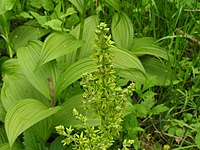Exercise during pregnancy can be good for the developing baby as well as for the mother, research suggests.
 ..
..
A team from the Kansas City University of Medicine and Biosciences suggest it is linked to better foetal heart health and nervous system development.
The findings from their pilot study of 26 women are being presented to the American Physiological Society’s conference in New York.
A UK expert said pregnant women should discuss exercise levels with their GP.
The researchers wanted to see if maternal exercise had cardiovascular benefits for the foetus.
They also wanted to see if foetuses whose mothers exercised had increased breathing movements compared to non-exercise exposed foetuses.
Foetal breathing is a “practice” movement where a baby developing in the womb gets ready to breathe after it is born.
It is also a sign of how well the respiratory system and central nervous system are developing.
Moderate exercise
The scientists used a non-invasive device to measure the magnetic fields produced by the electrical activity of maternal and foetal heart rates.
“Keep within your comfort zone so that you can still hold a conversation” Says Patrick O’Brien, Royal College of Obstetricians and Gynaecologists
It was also able to pick up foetal movements including breathing, body movements, hiccups and sucking.
The women studied were aged between 20 and 35 and were checked between the 36th and 38th weeks of pregnancy.
They were classed as exercisers if they did moderate intensity aerobic exercise such as moderate to vigorous walking, stationary bicycling and running for at least 30 minutes, three times per week. Most were doing more.
The researchers then compared them with pregnant women who did not exercise regularly.
Dr Linda May, who led the study, said: “Foetal breathing movement and the nervous system were more mature in babies exposed to exercise.”
She said further research was needed, both to look at more pregnancies and to evaluate the health of babies once they had been born.
But she said understanding more about how to improve the development babies’ nervous system could aid understanding of cot death.
“Some researchers think it has to do with something being wrong in the central nervous system, which affects respiration.
“Babies aren’t able to wake up and breath for themselves if they need to.”
She said this study had shown the babies of women who exercised had a more mature respiratory system, suggesting they would fare better after birth.
‘Do not overheat’
Dr May said it was safe for women to exercise while pregnant. But she said the team did not yet have evidence about what the minimum beneficial level of exercise in pregnancy was.
Patrick O’Brien, a consultant obstetrician and spokesperson for the Royal College of Obstetricians and Gynaecologists said the study was interesting and worth following up, although it was small.
He added: “This is an interesting finding and one which should encourage women to keep healthy when pregnant.
“Pregnant women should consult their midwives and doctors on the types of exercise they could do when pregnant and how much.”
Mr O’Brien said excessive exercise during pregnancy could be dangerous for the unborn baby if a woman becomes too hot or lets their heart rate go over 130 beats per minute.
But he said there was is no increased risk of miscarriage or premature labour linked to exercise.
He advised: “Keep within your comfort zone so that you can still hold a conversation.”
Sources: BBC NEWS:April 17,09
![Reblog this post [with Zemanta]](https://i0.wp.com/img.zemanta.com/reblog_e.png?w=580)



